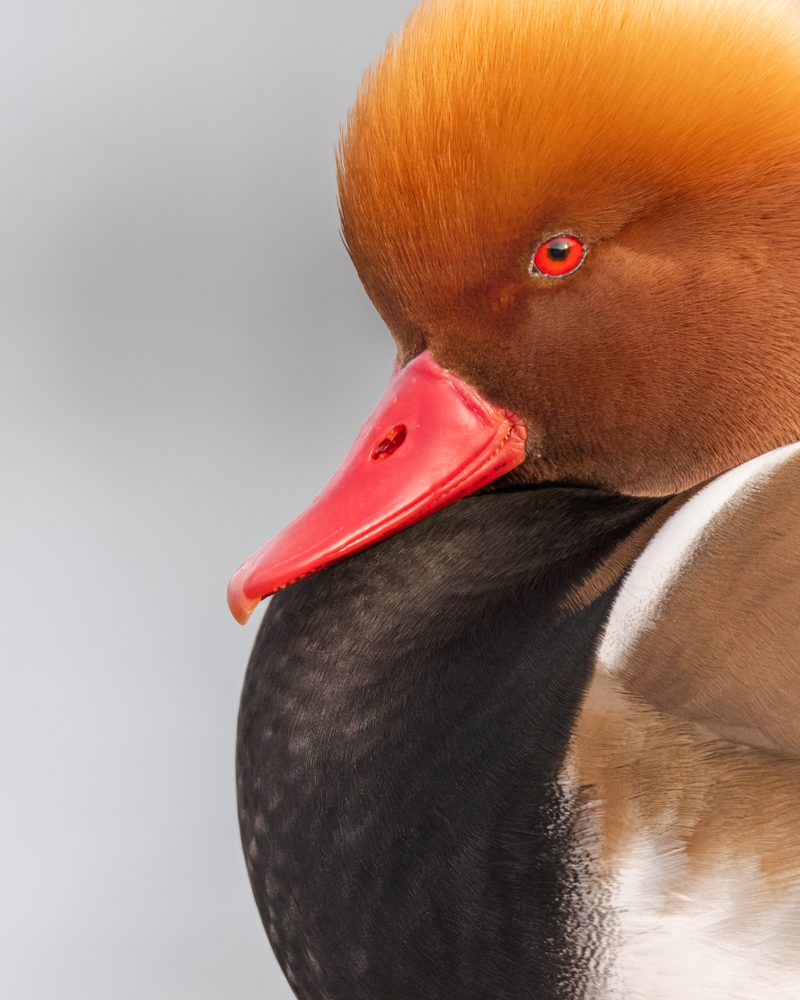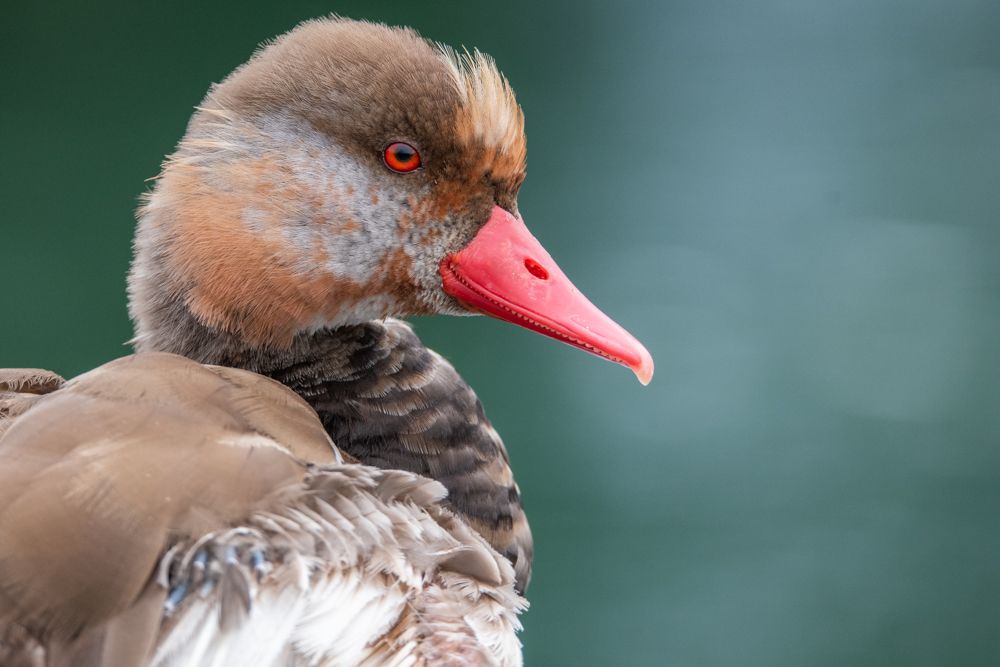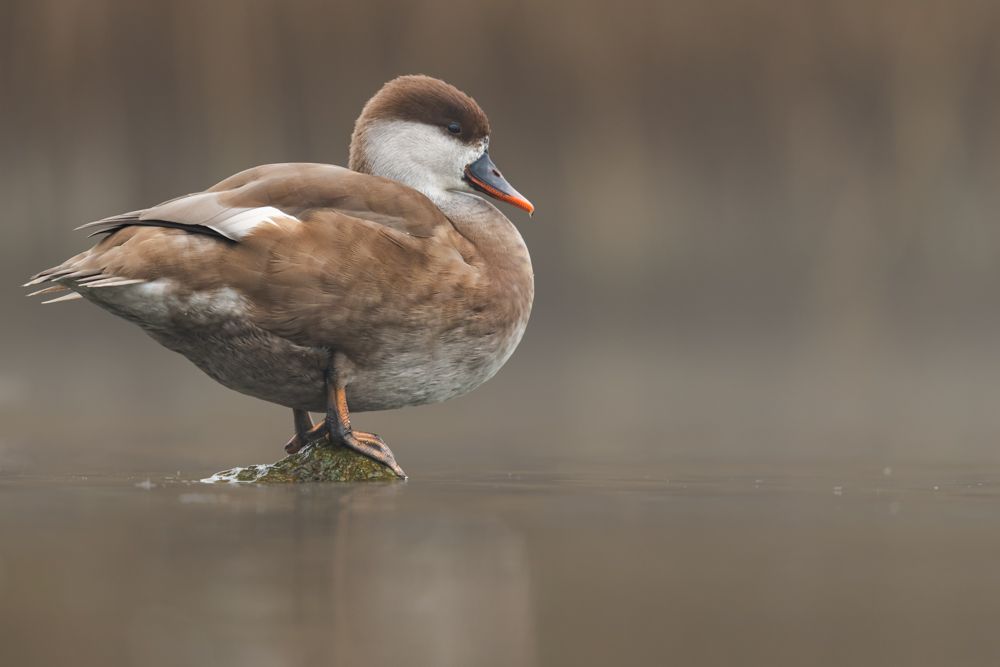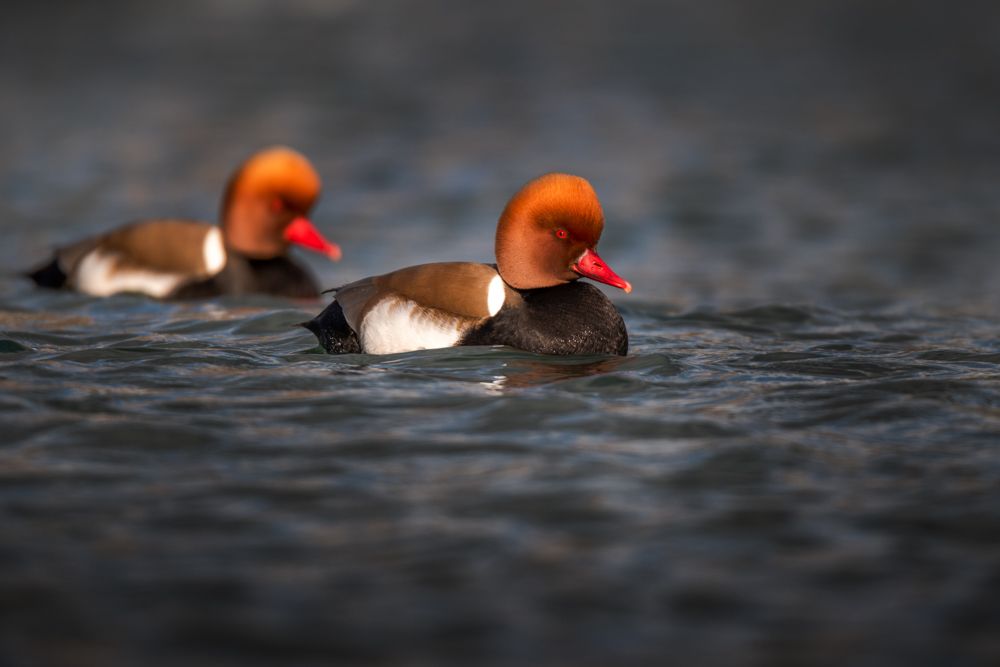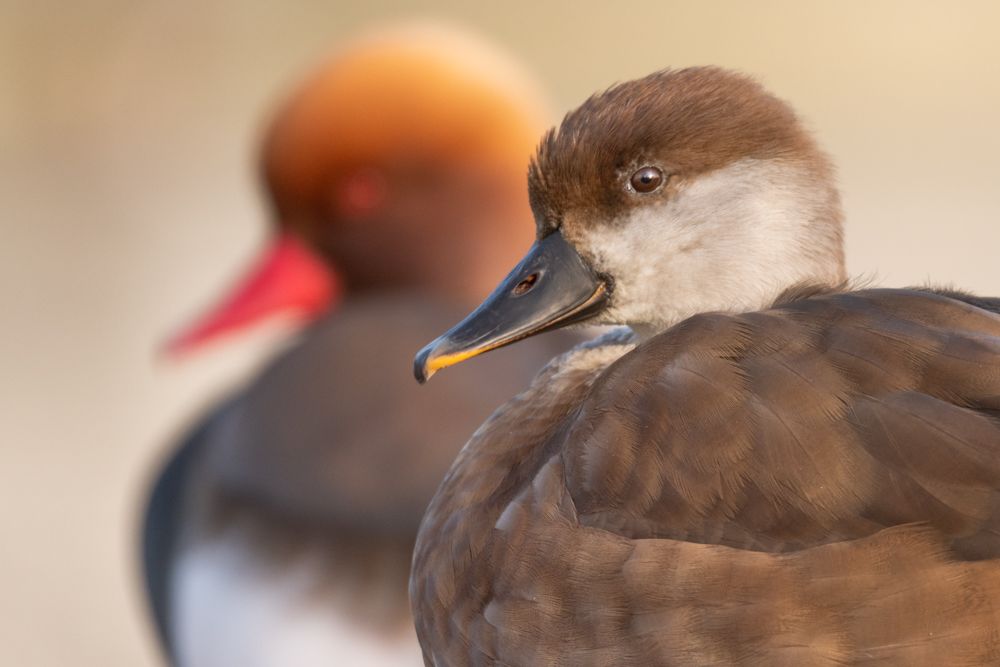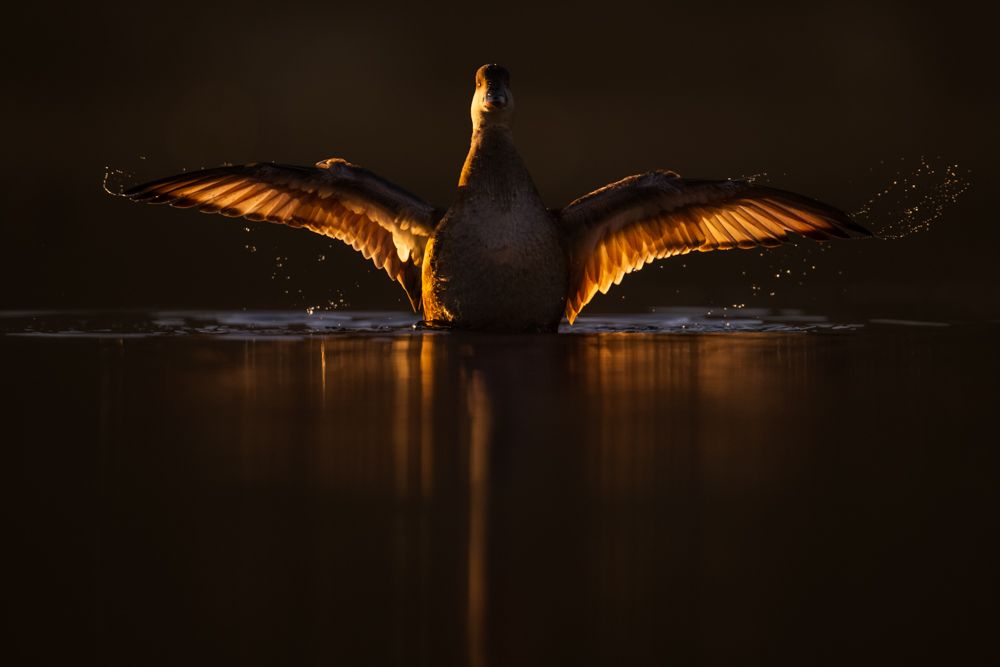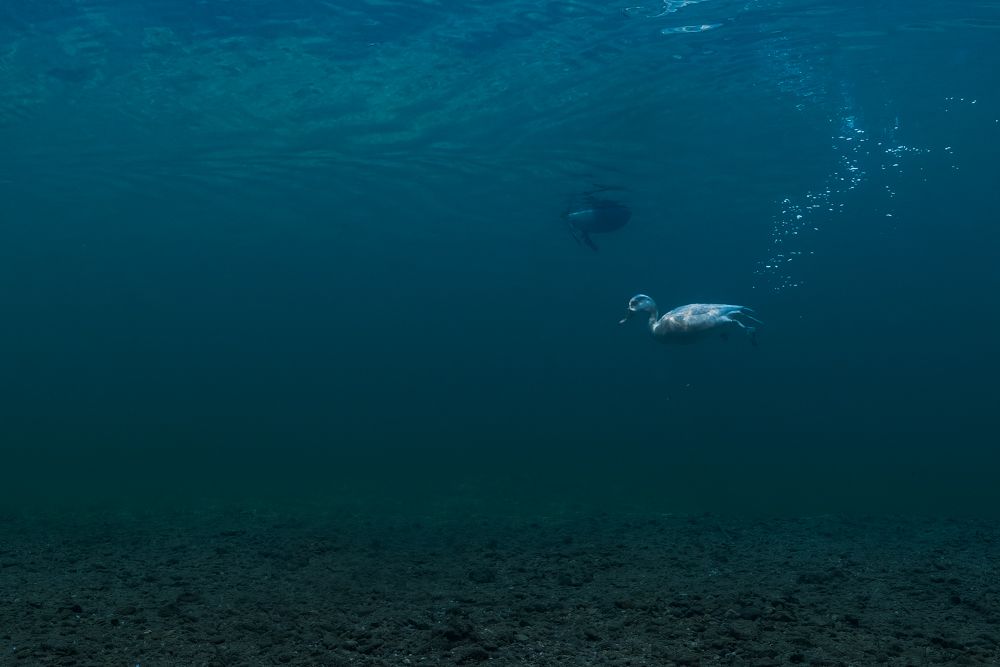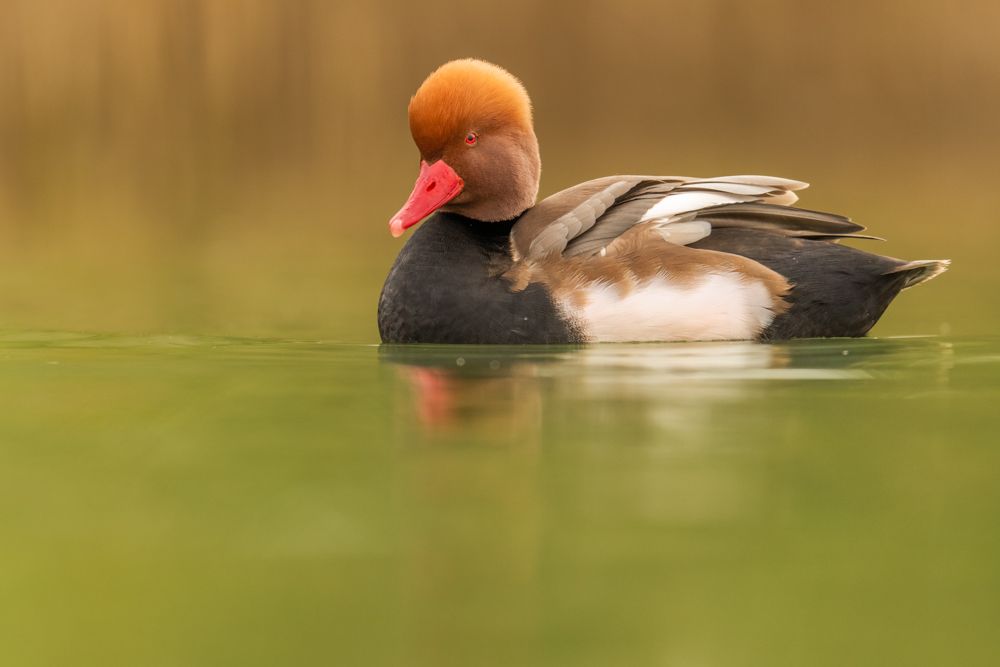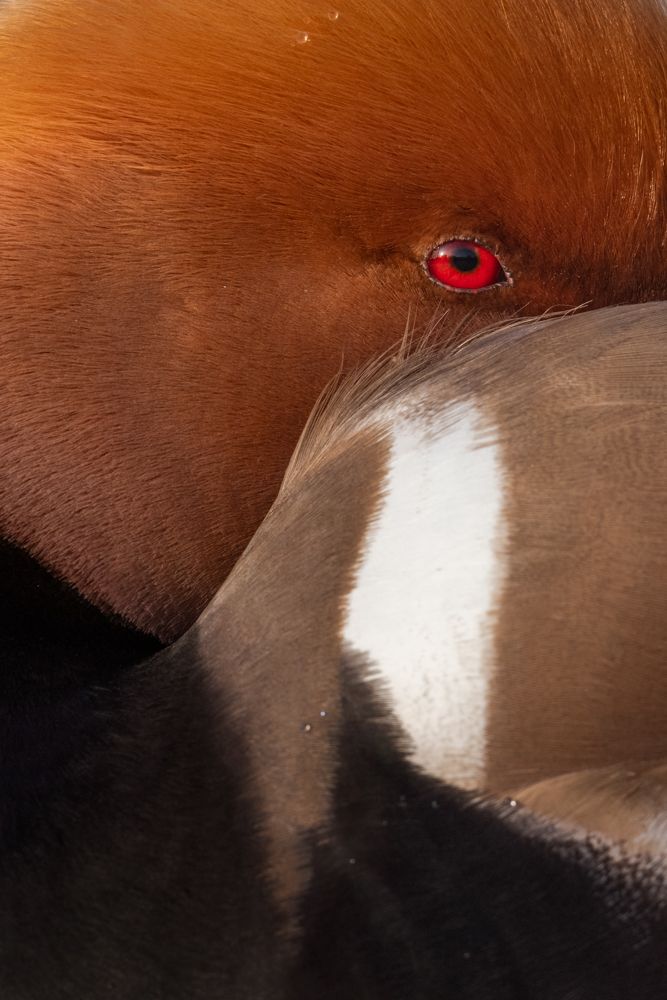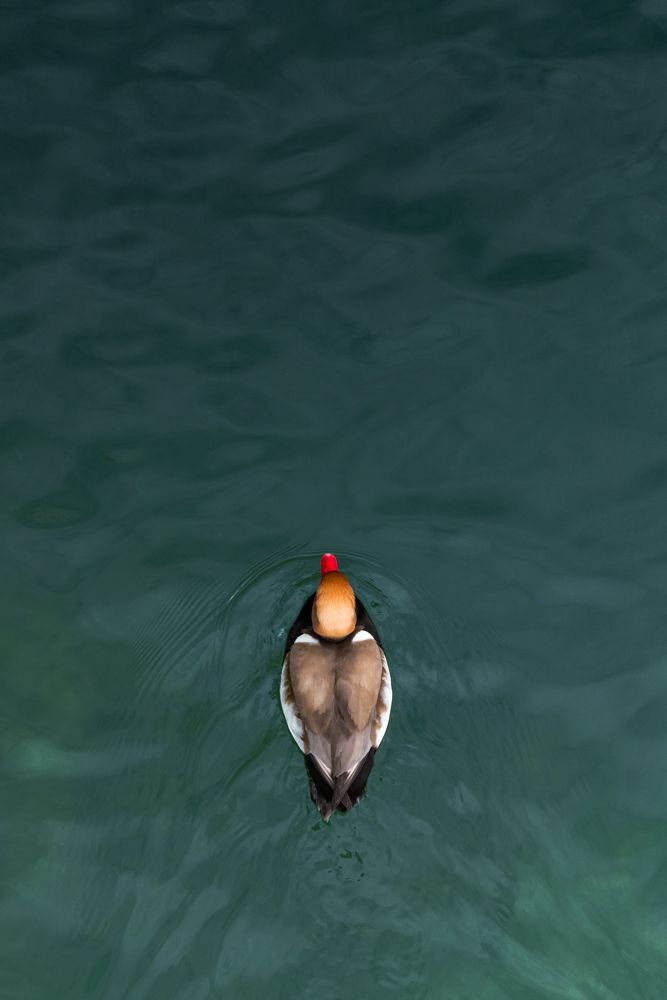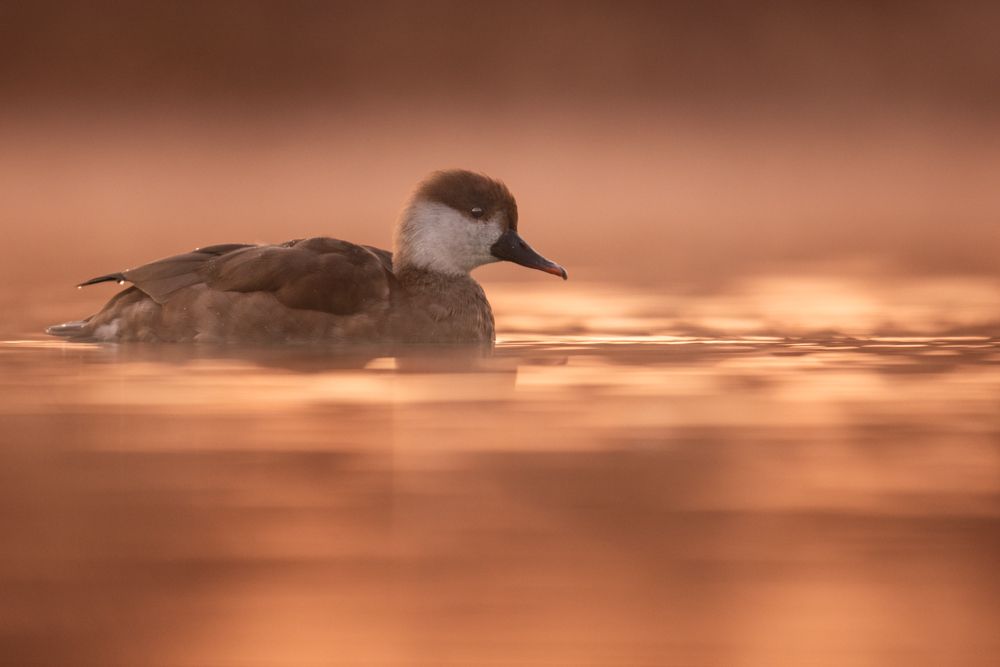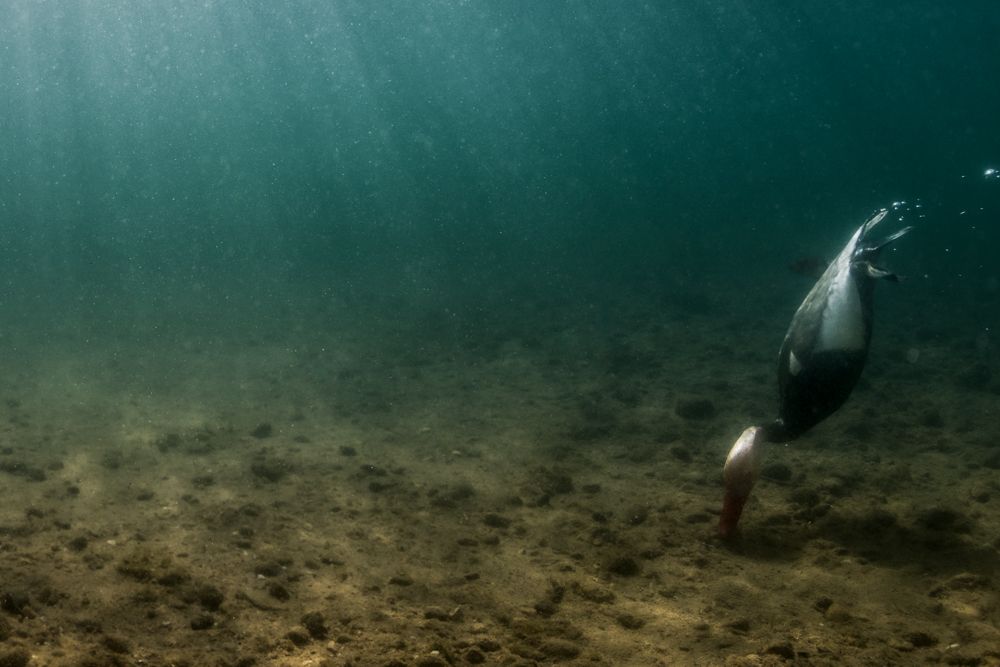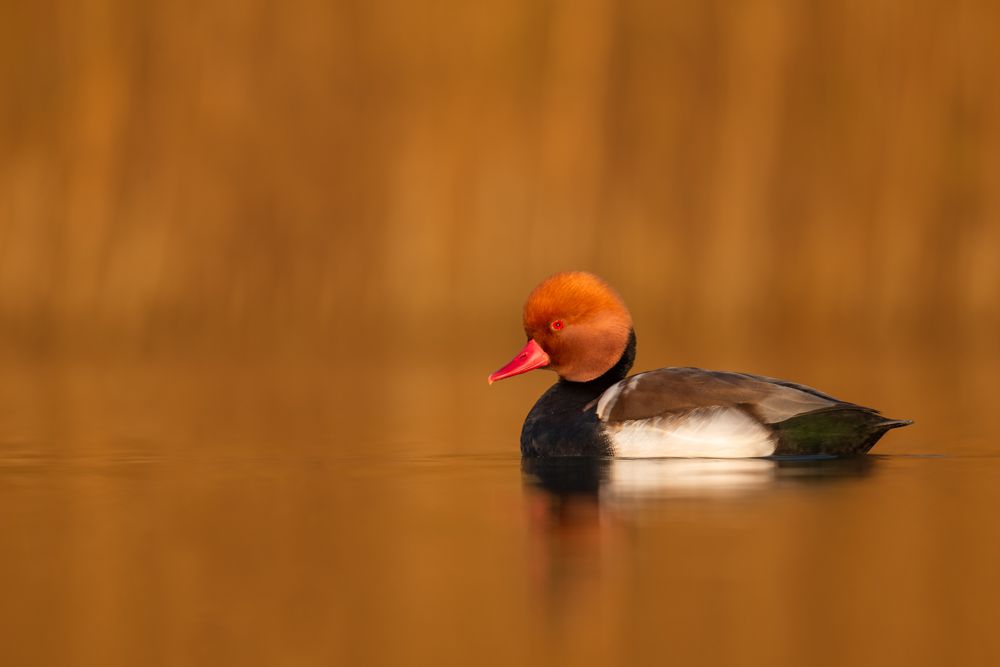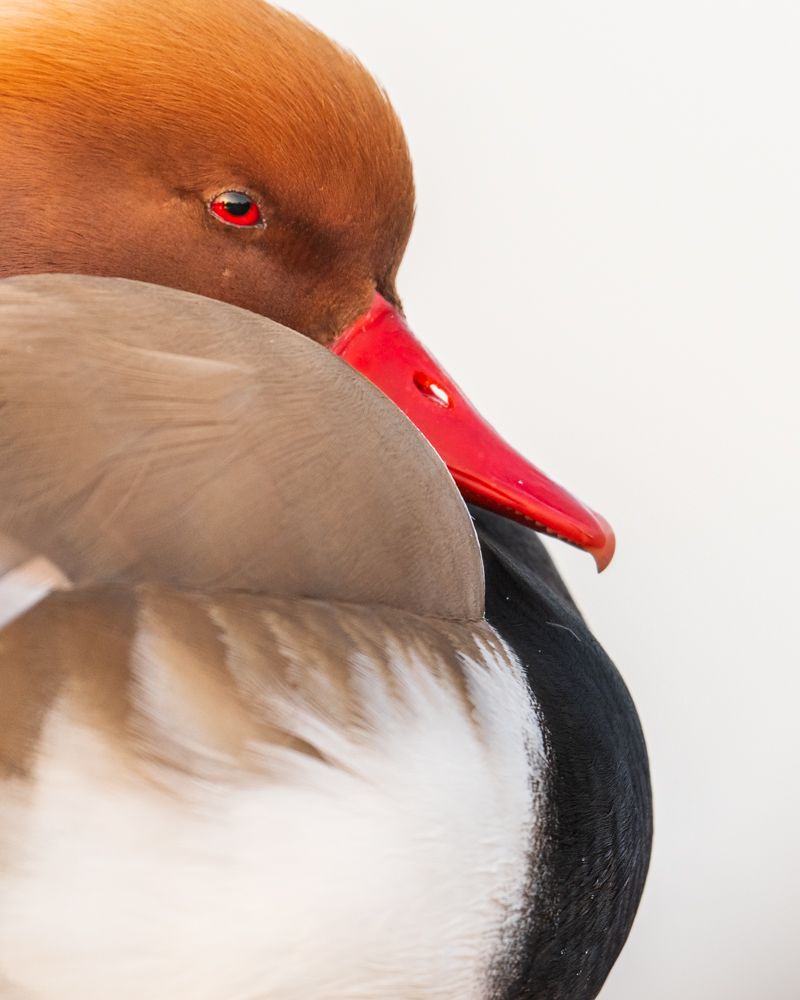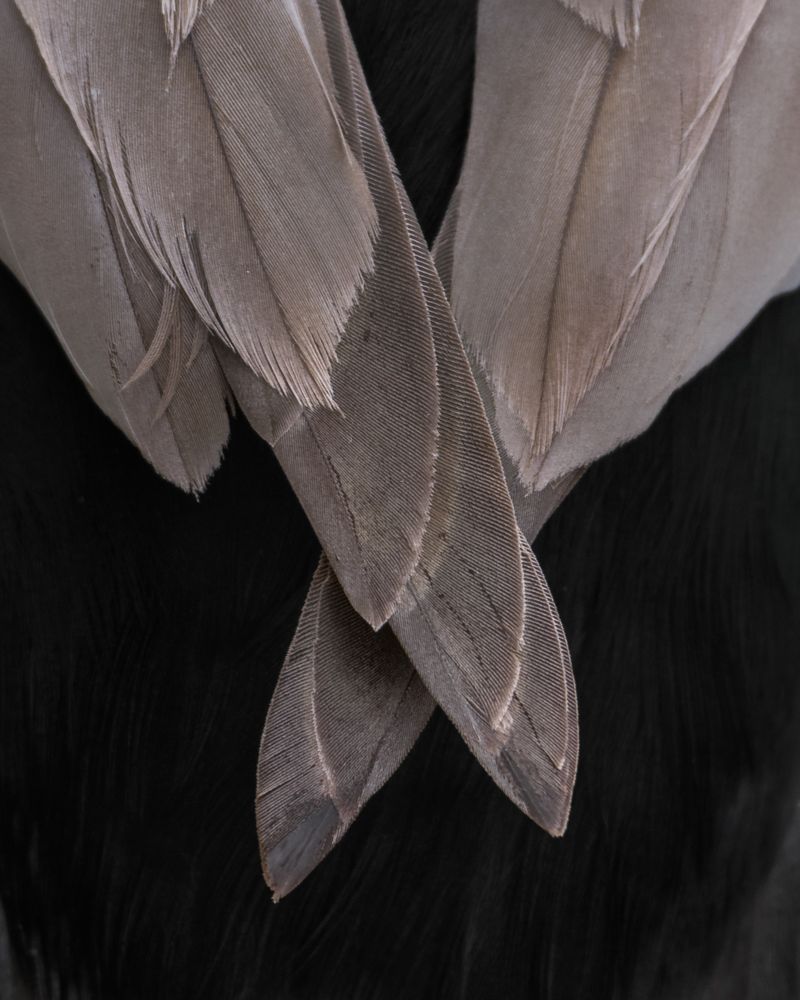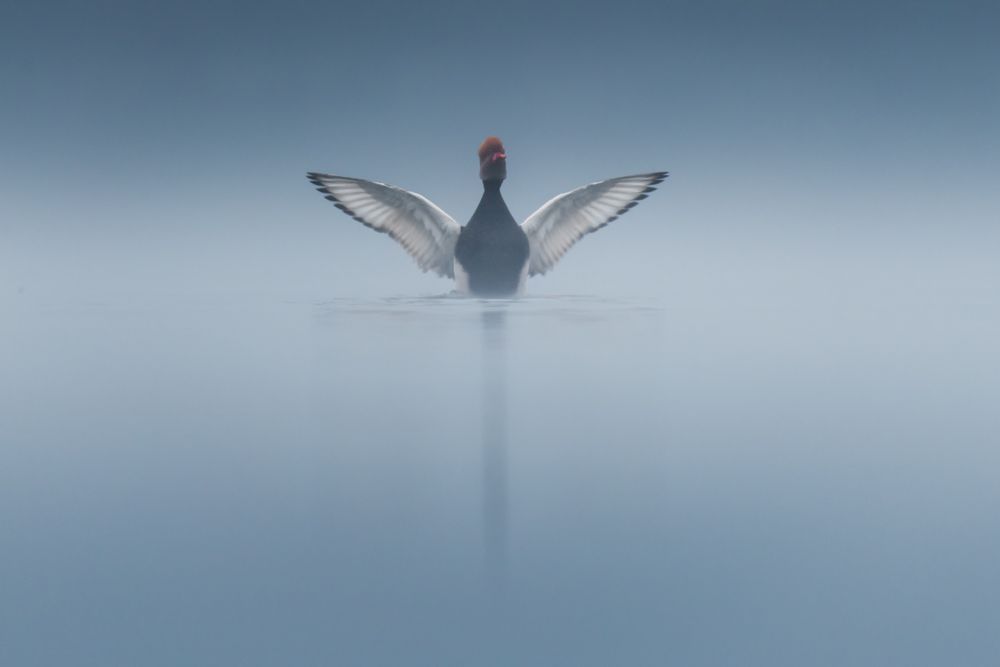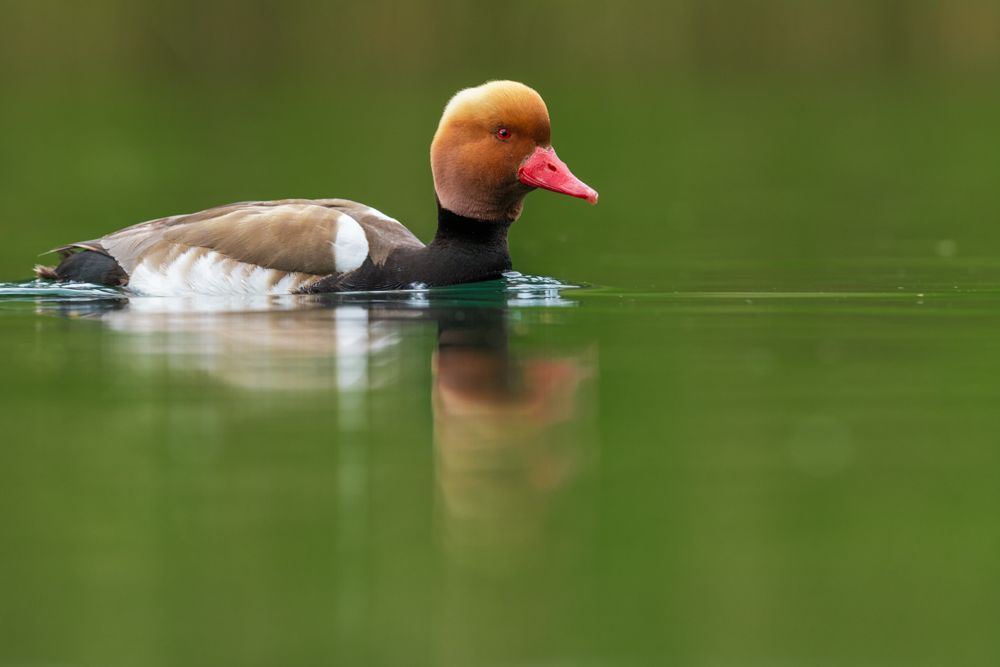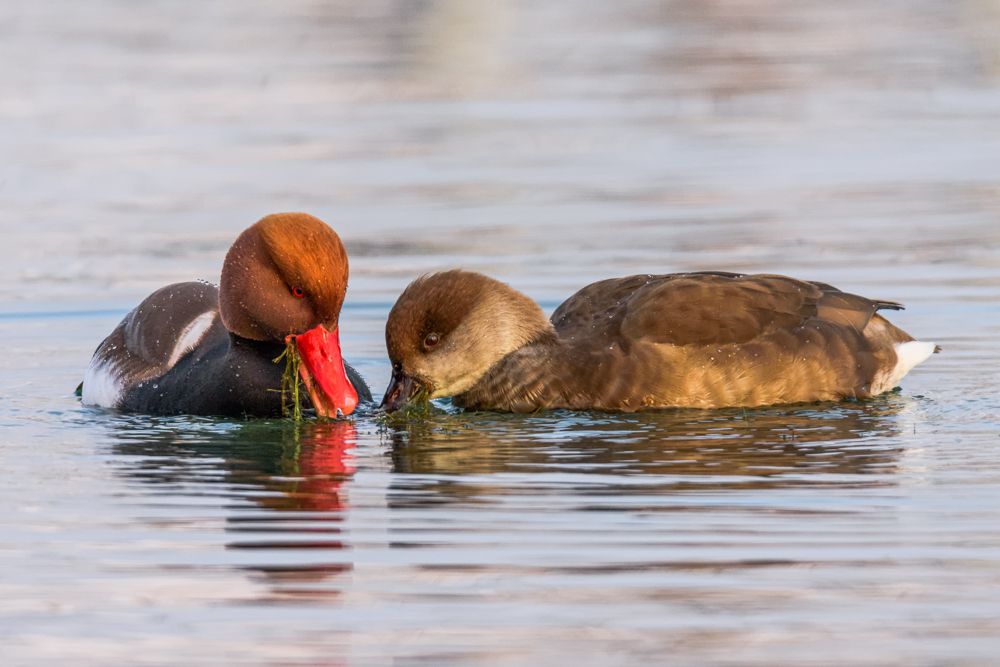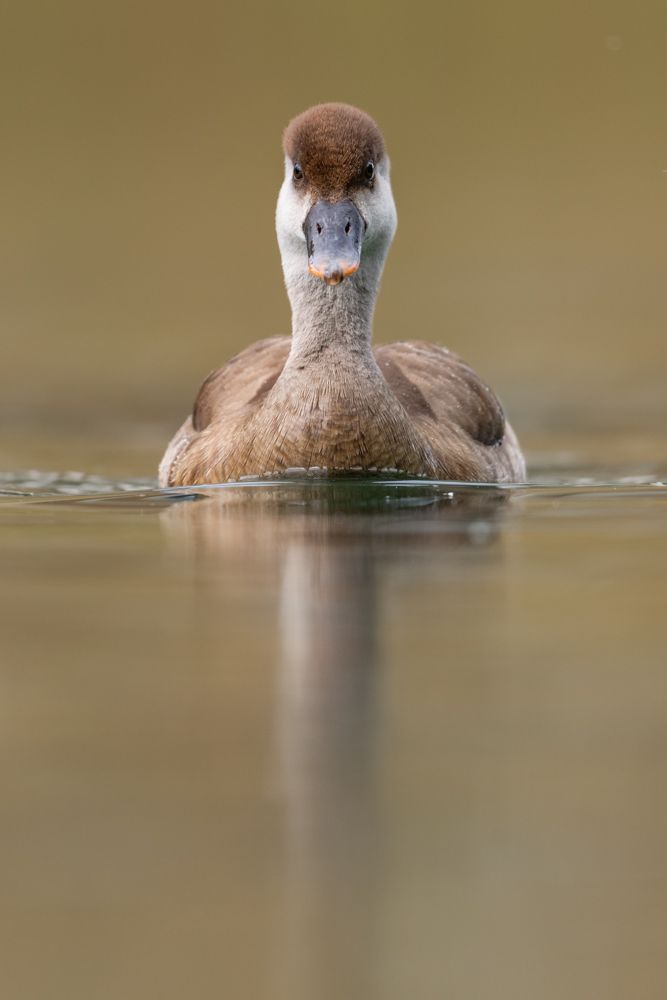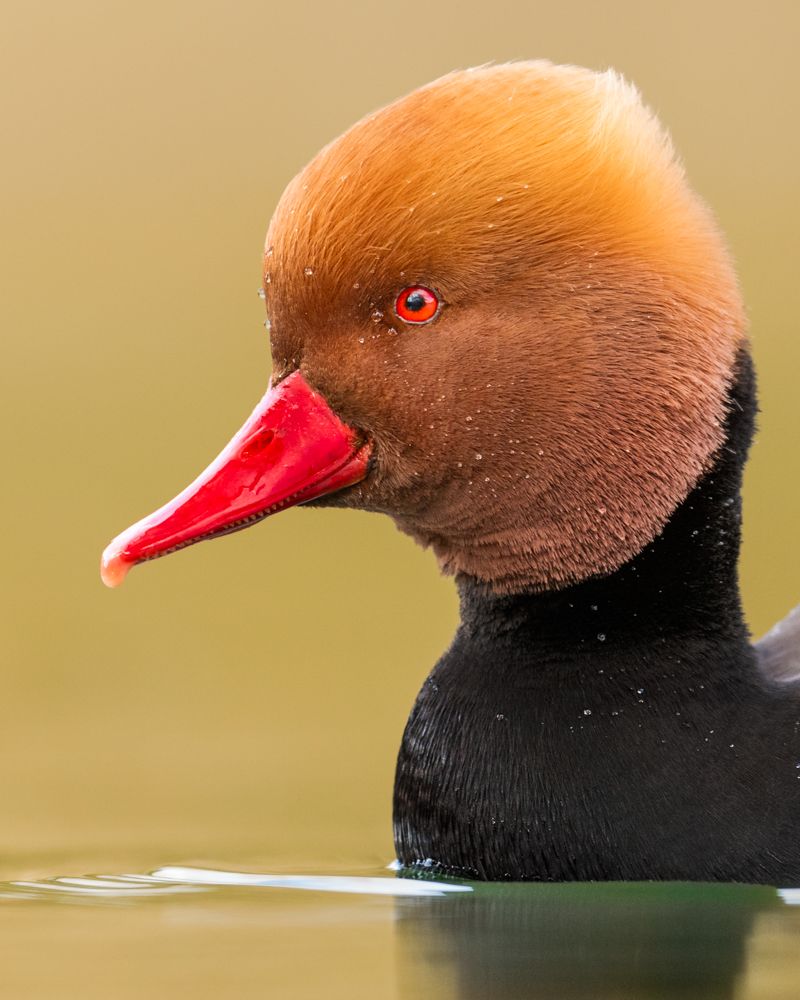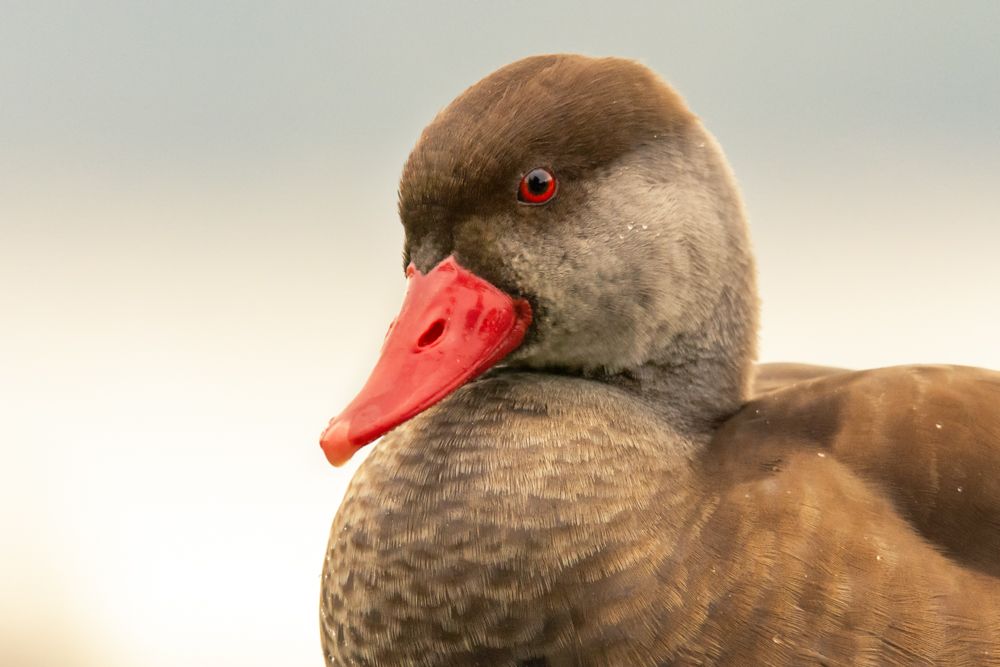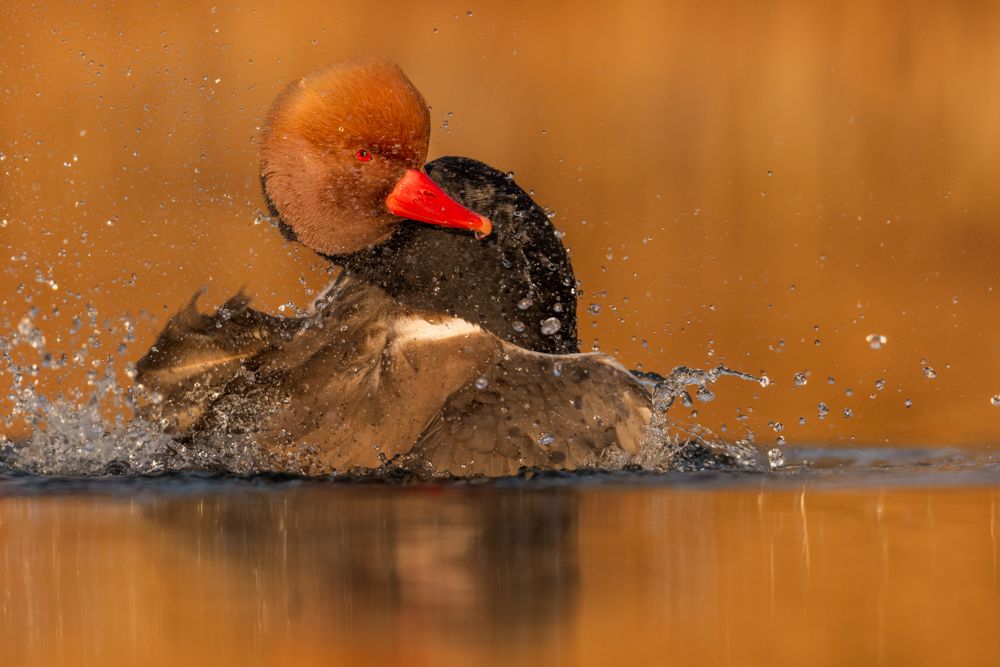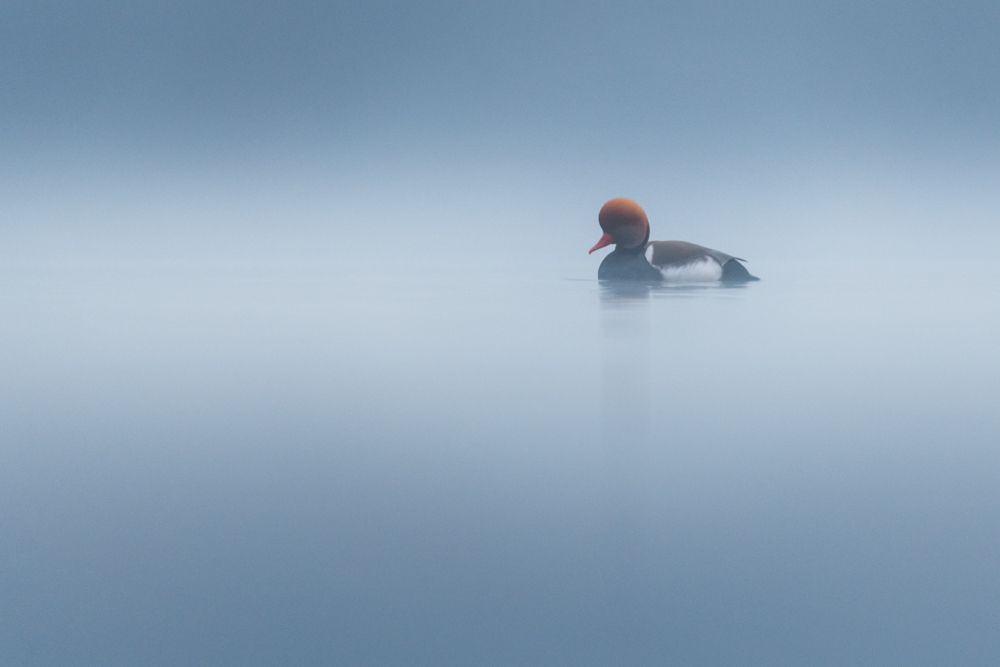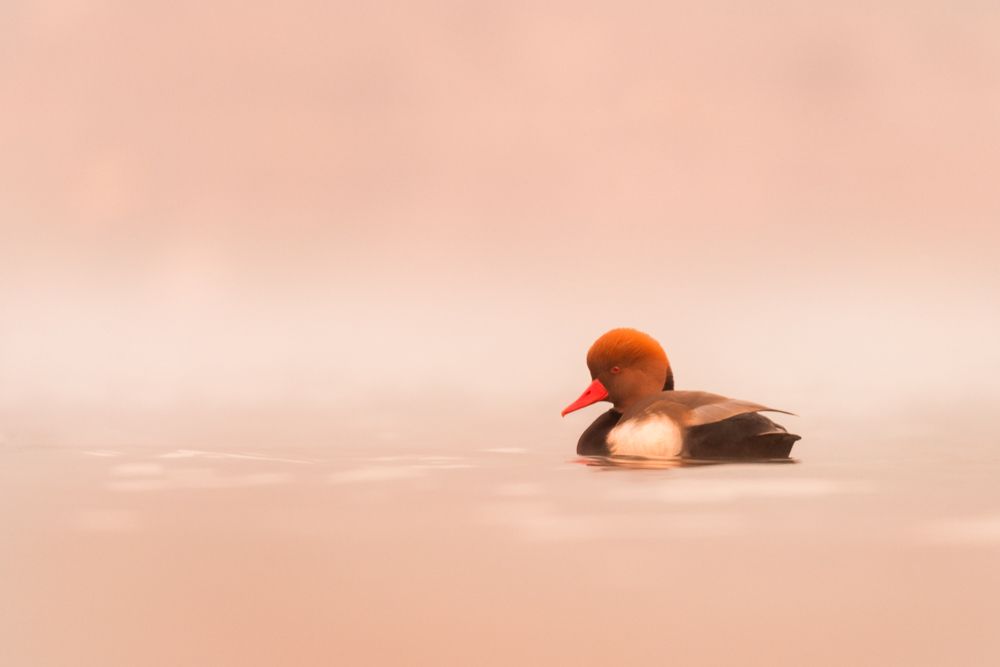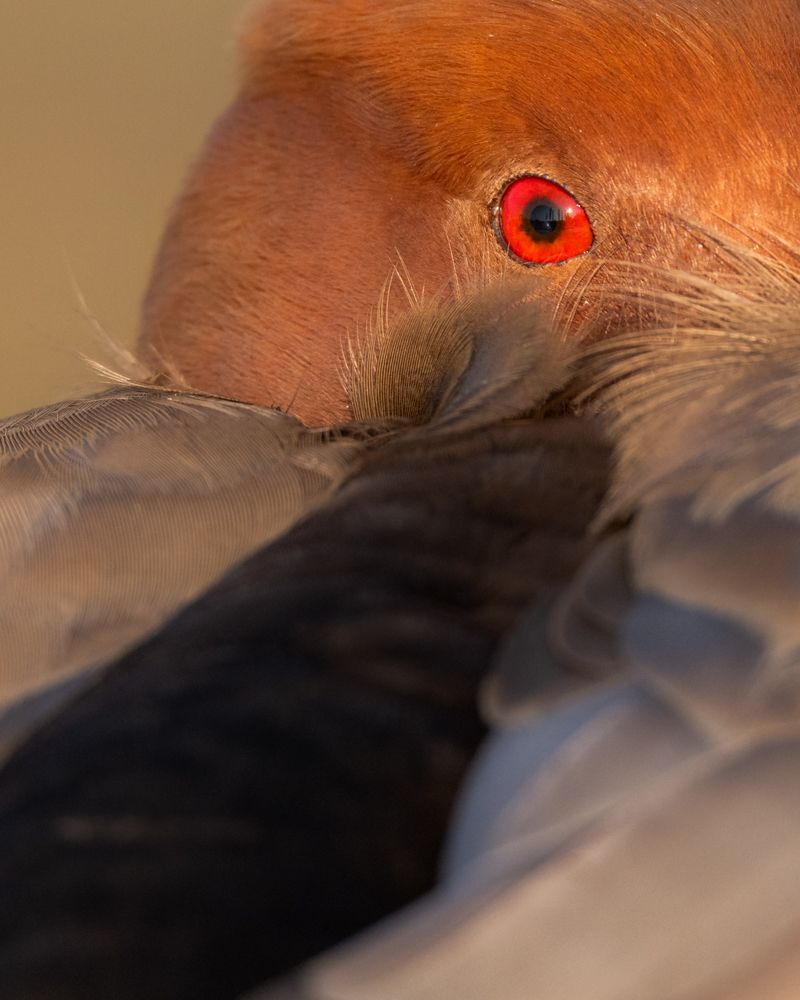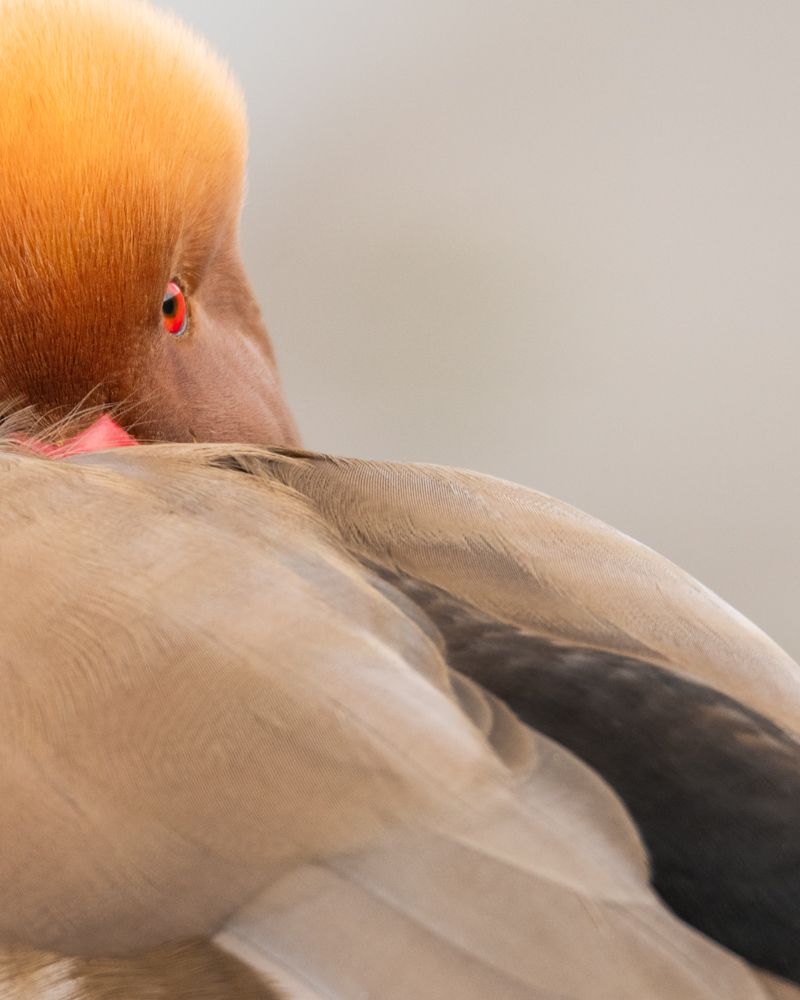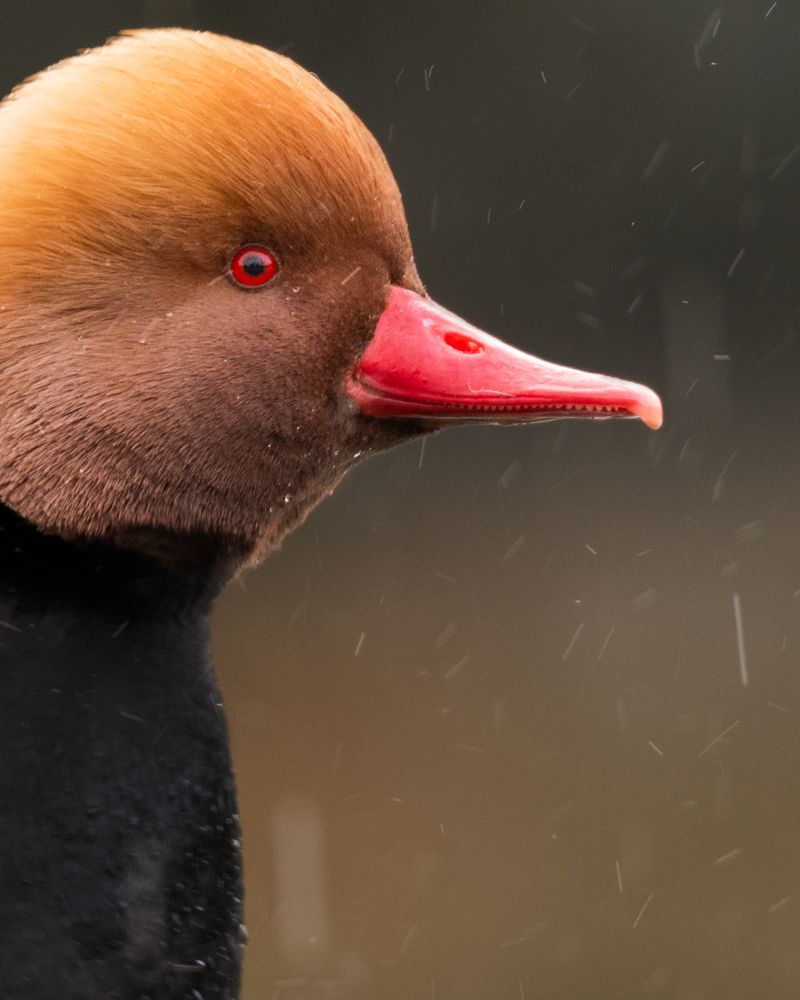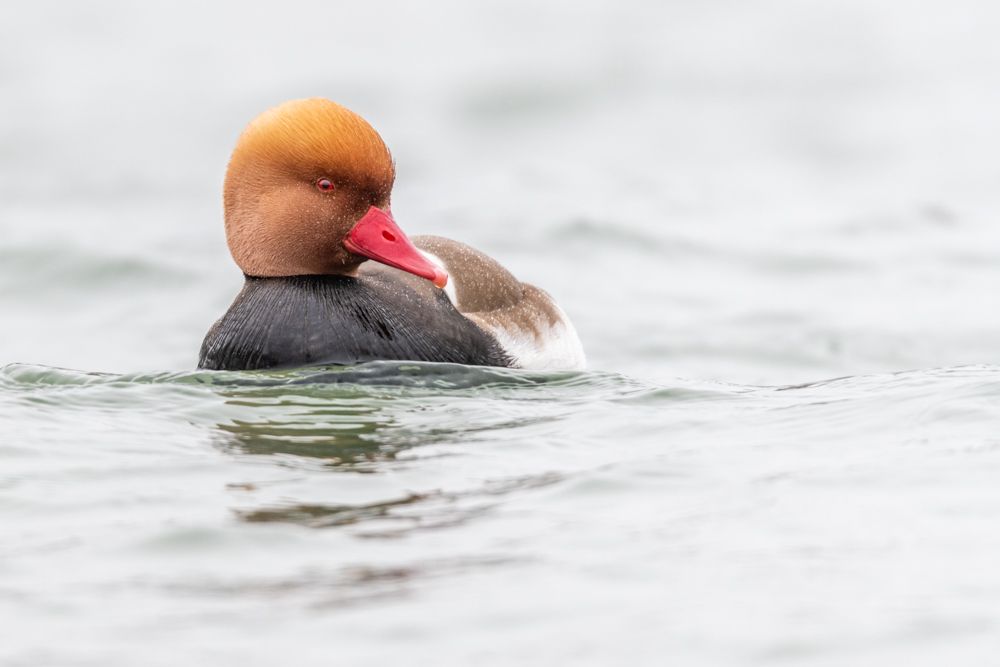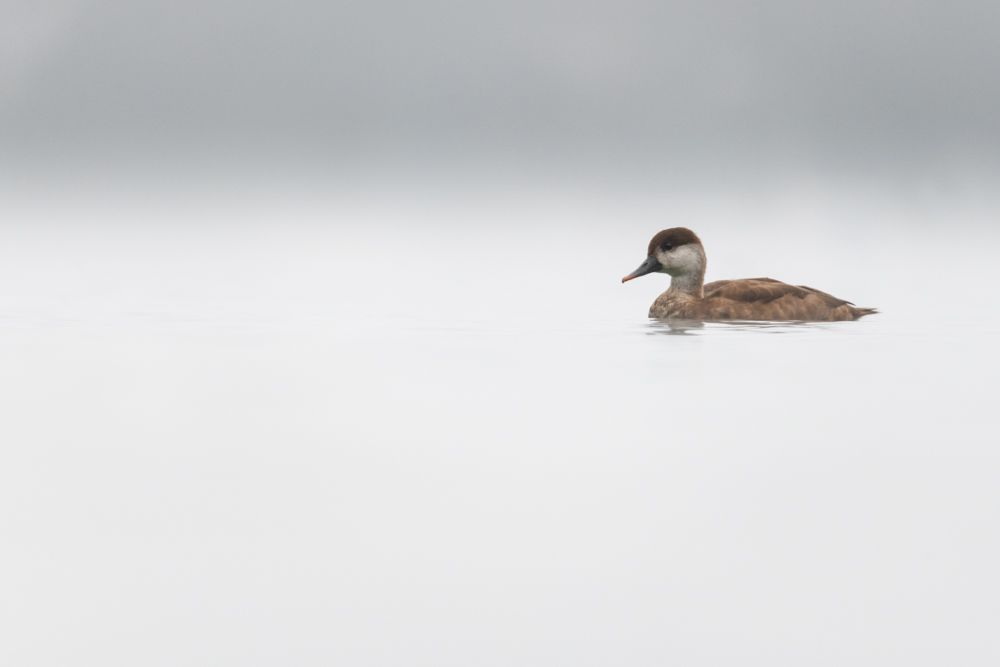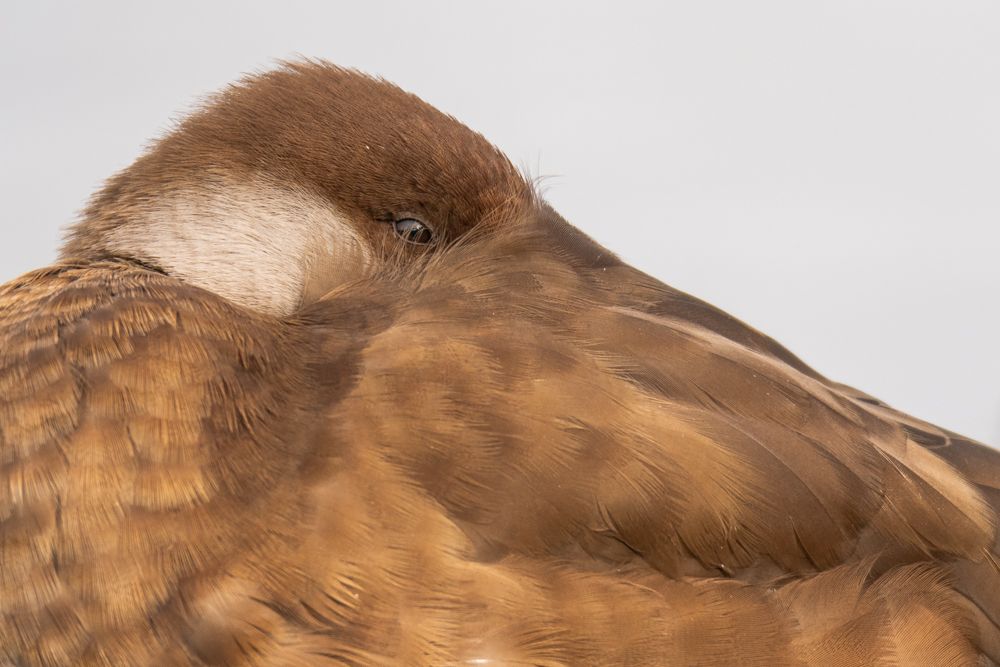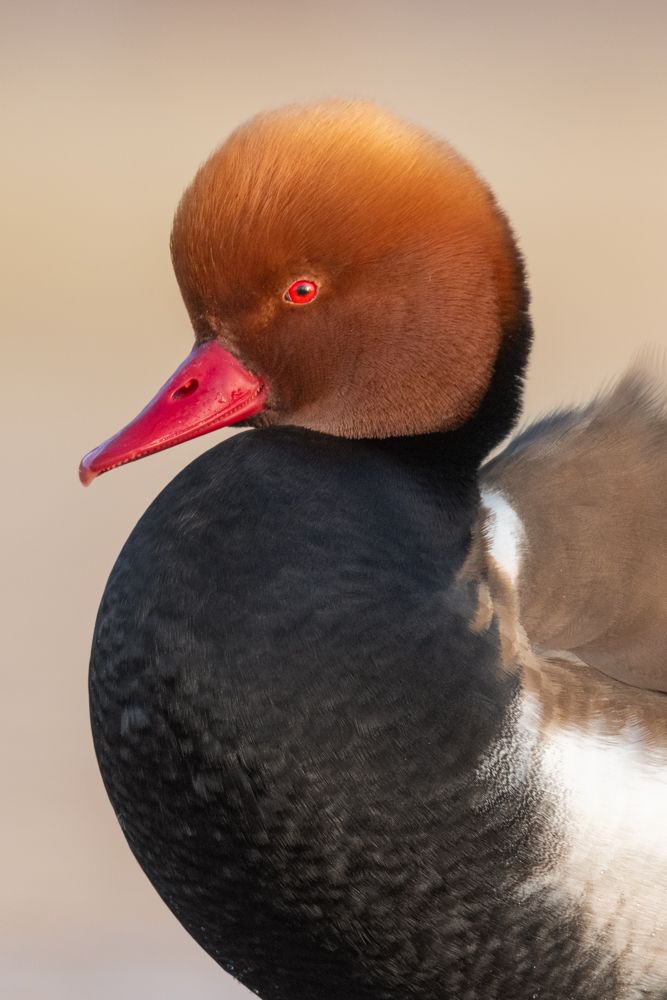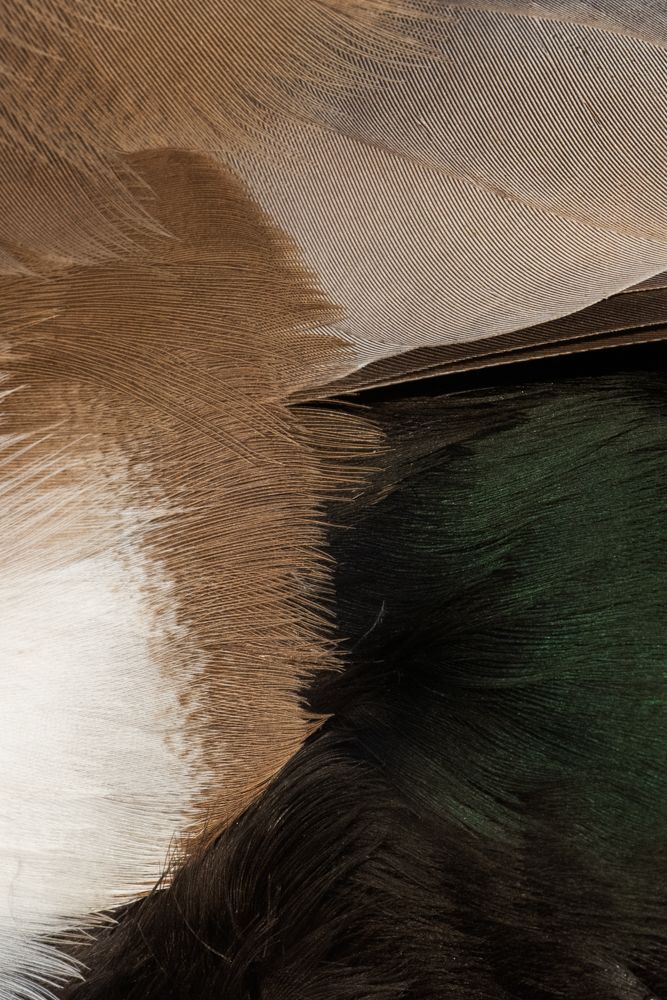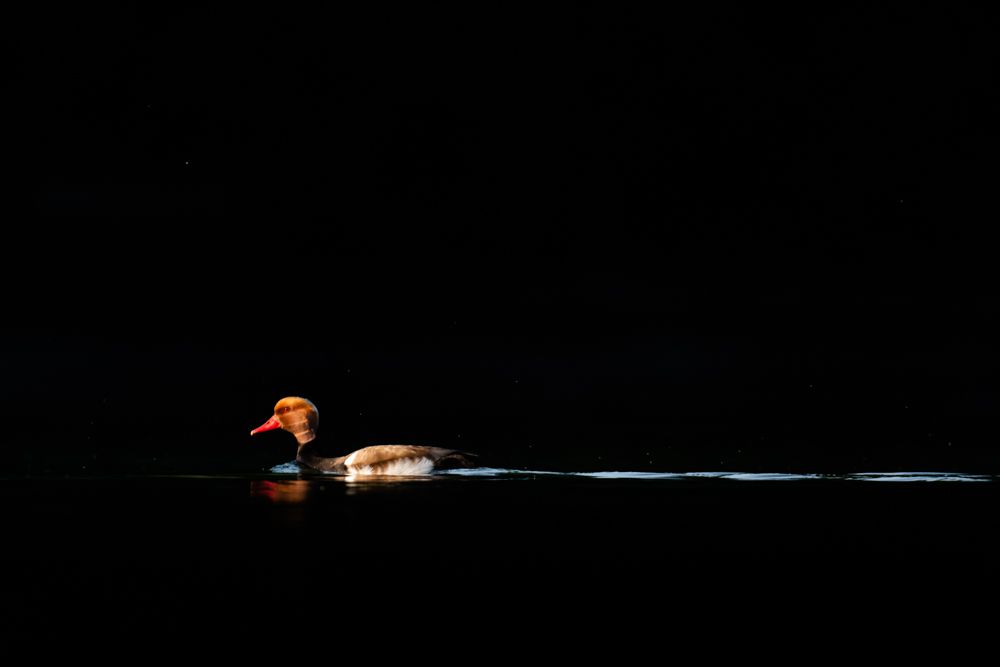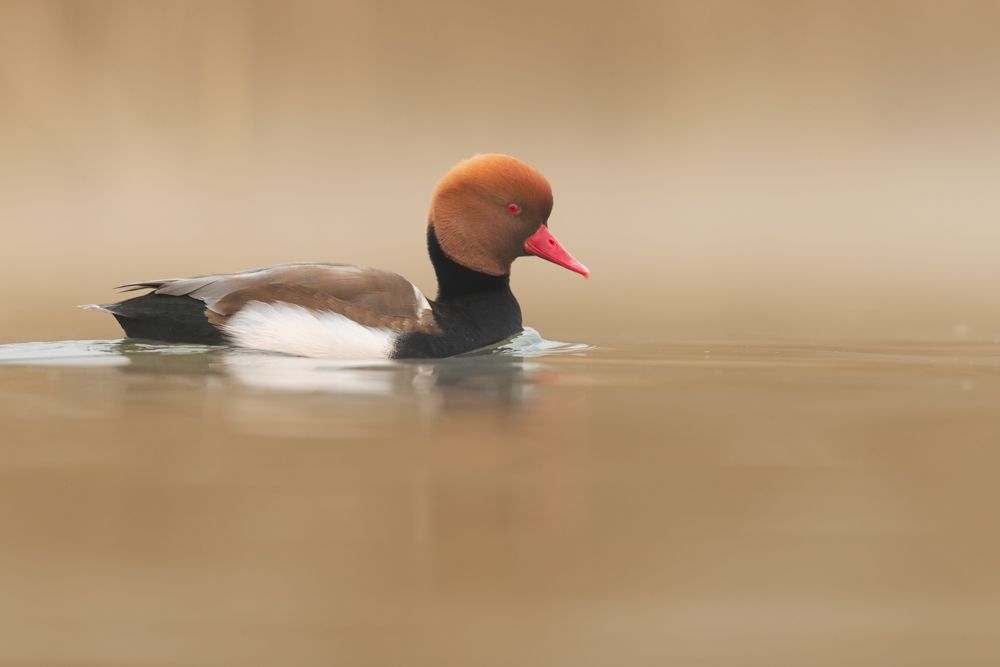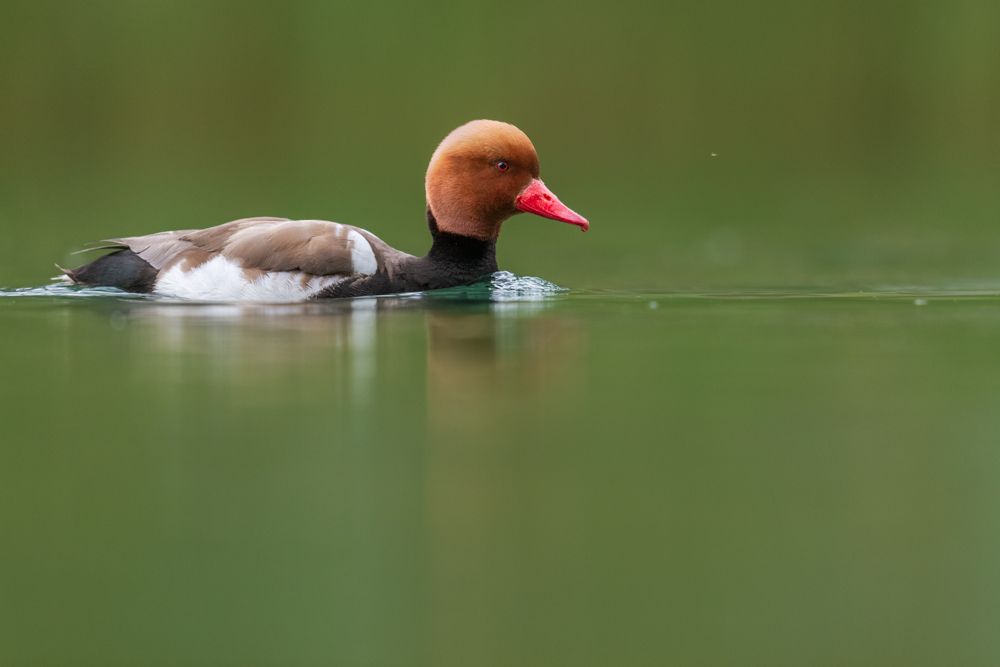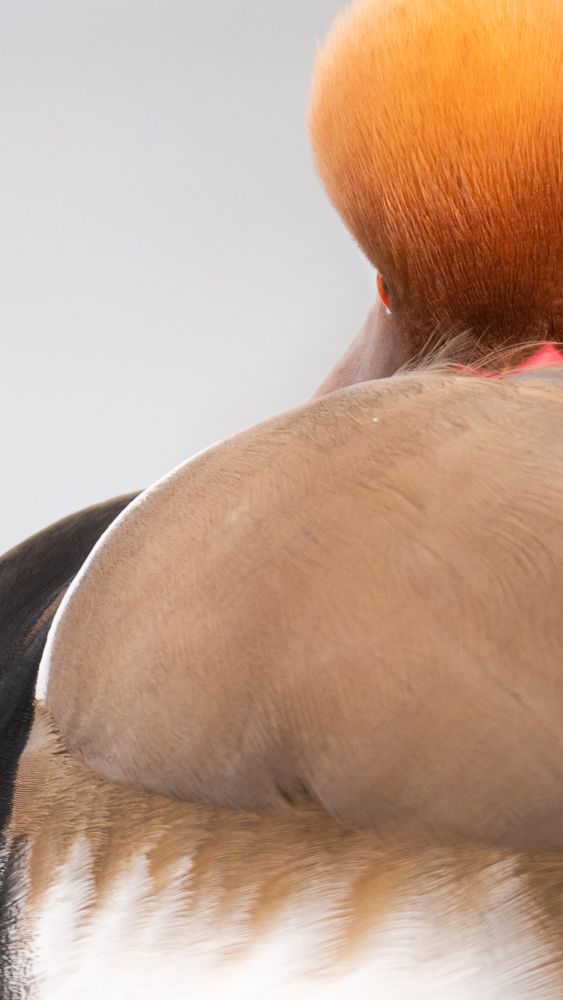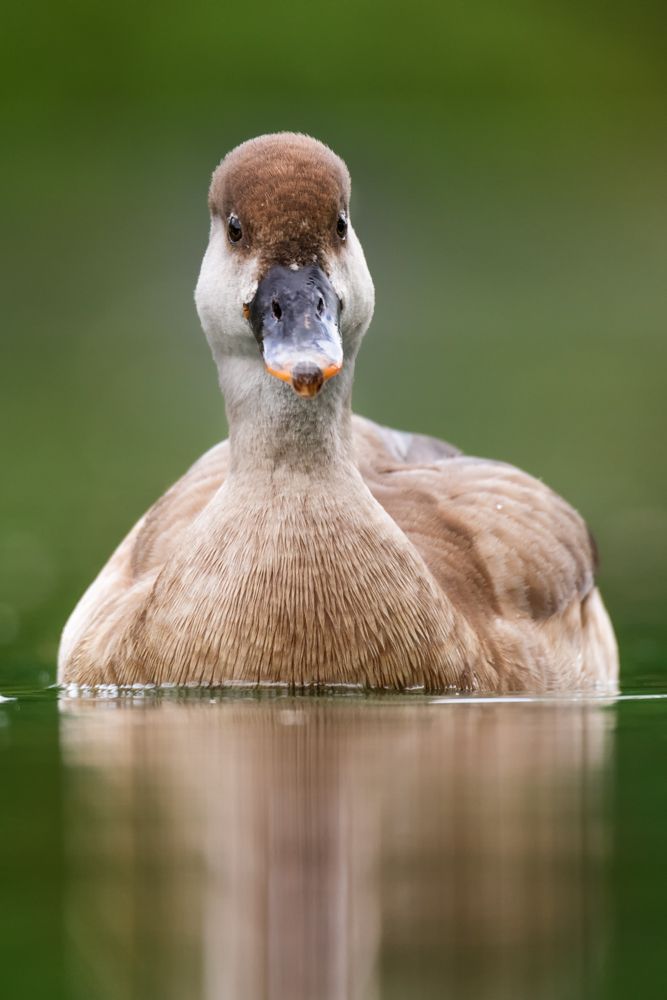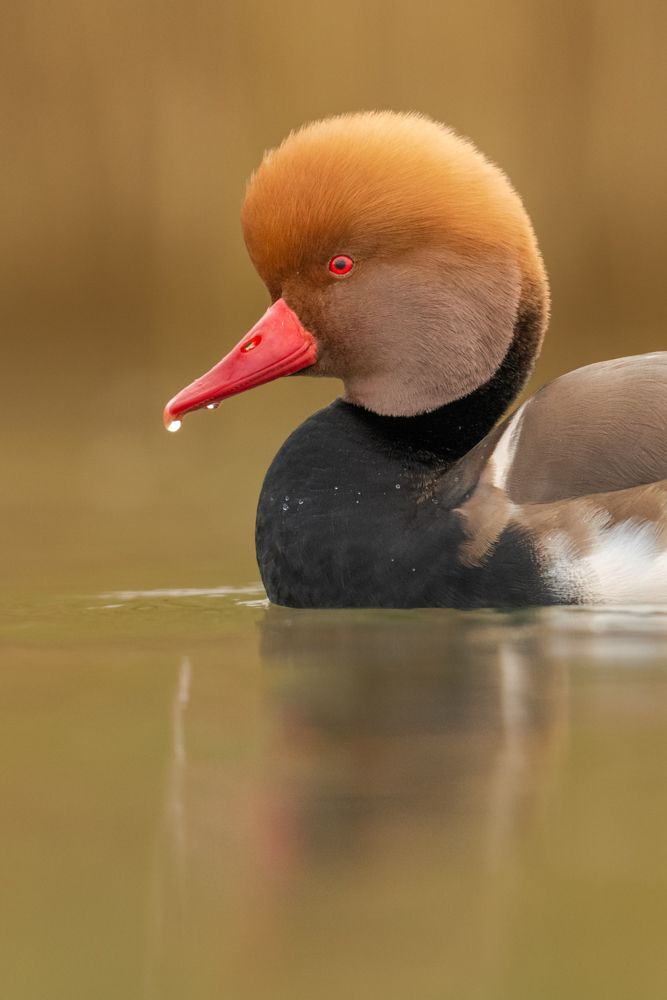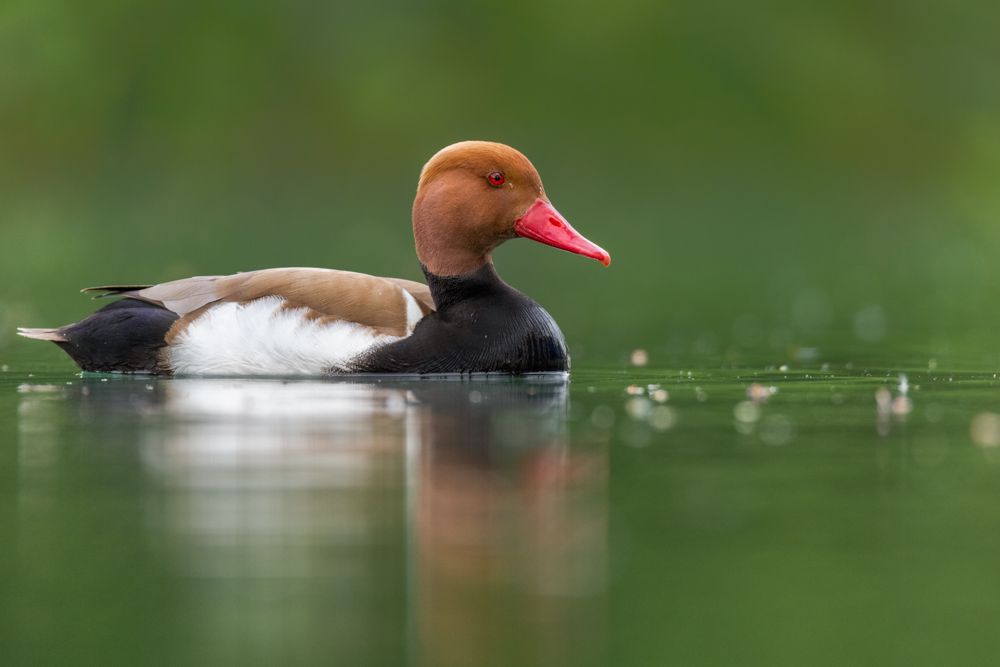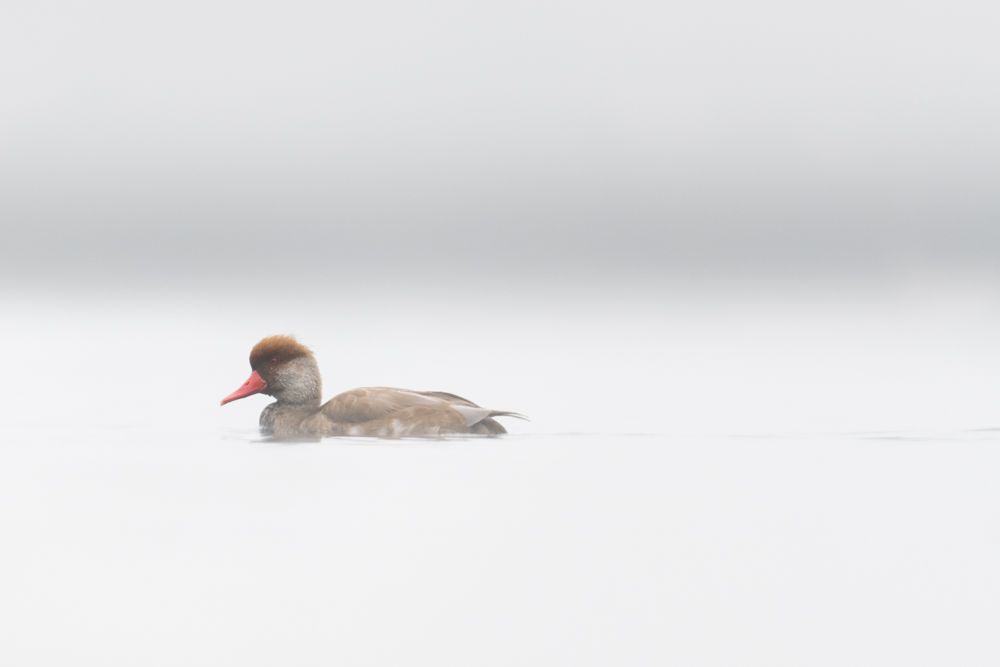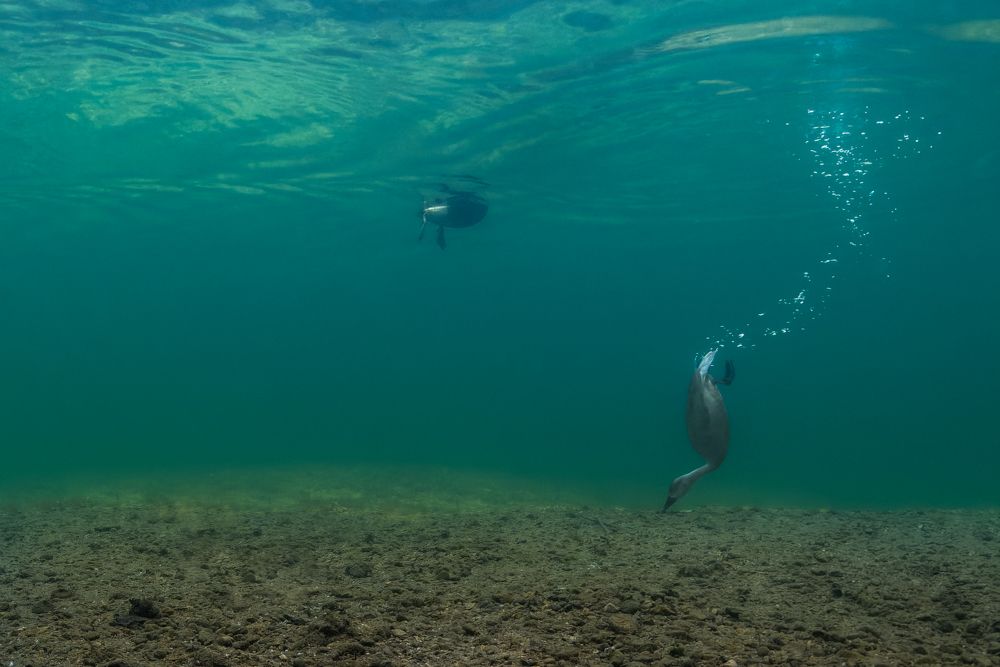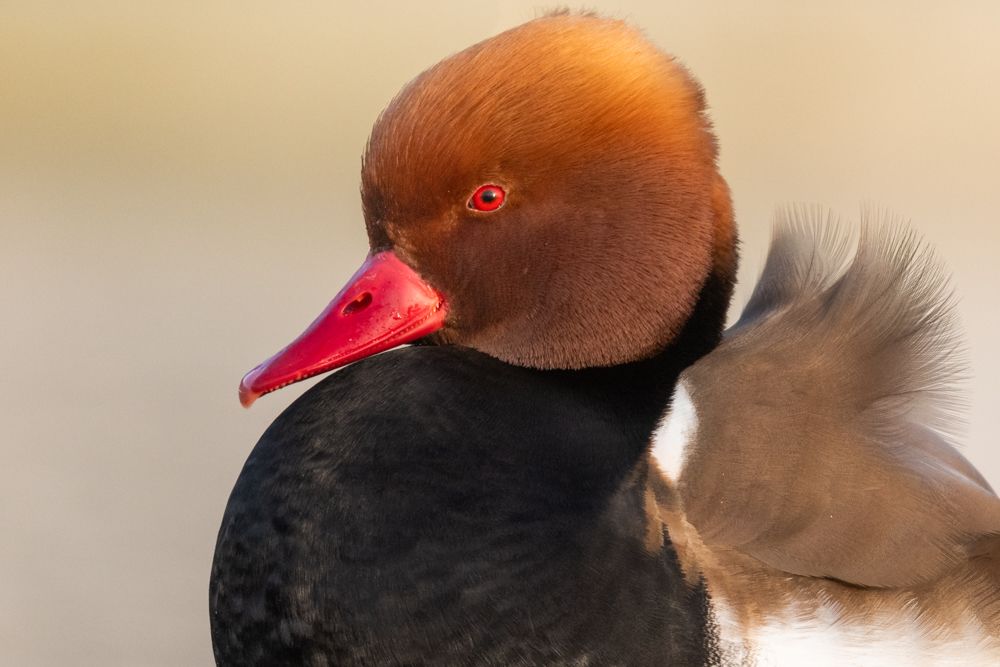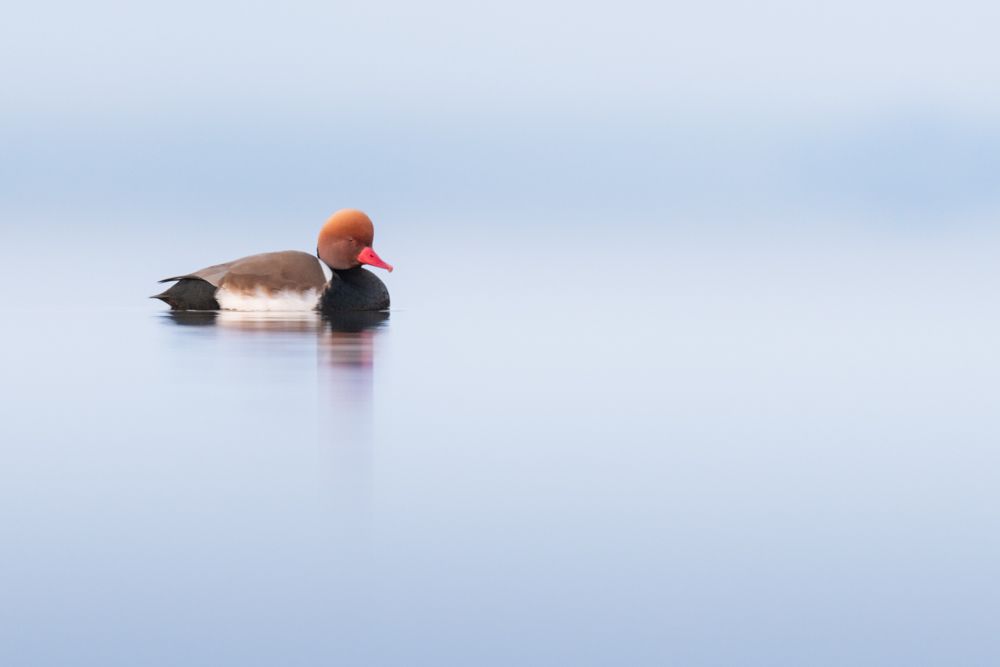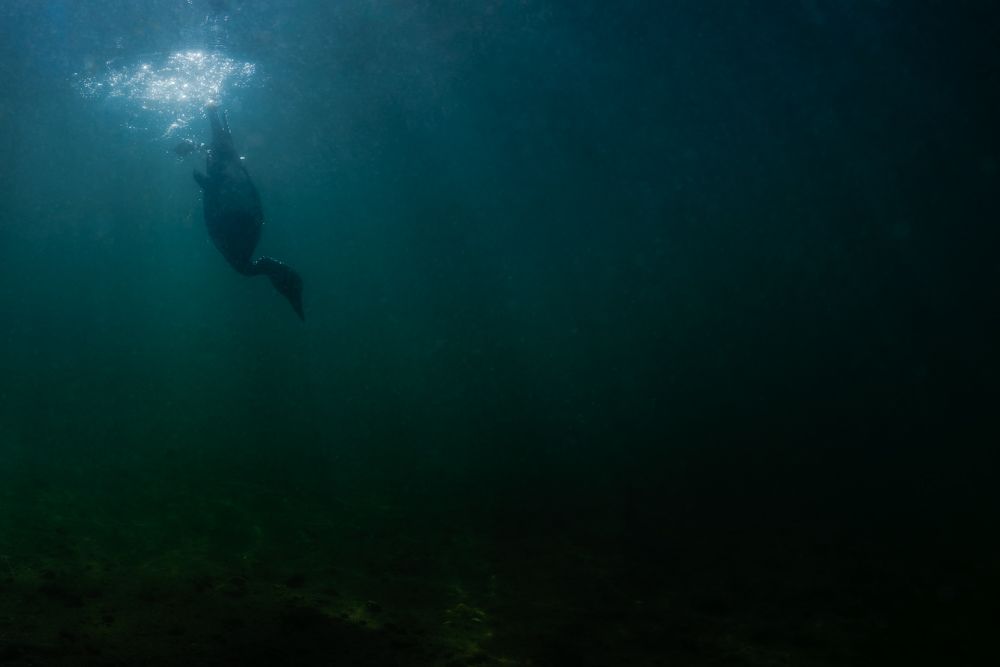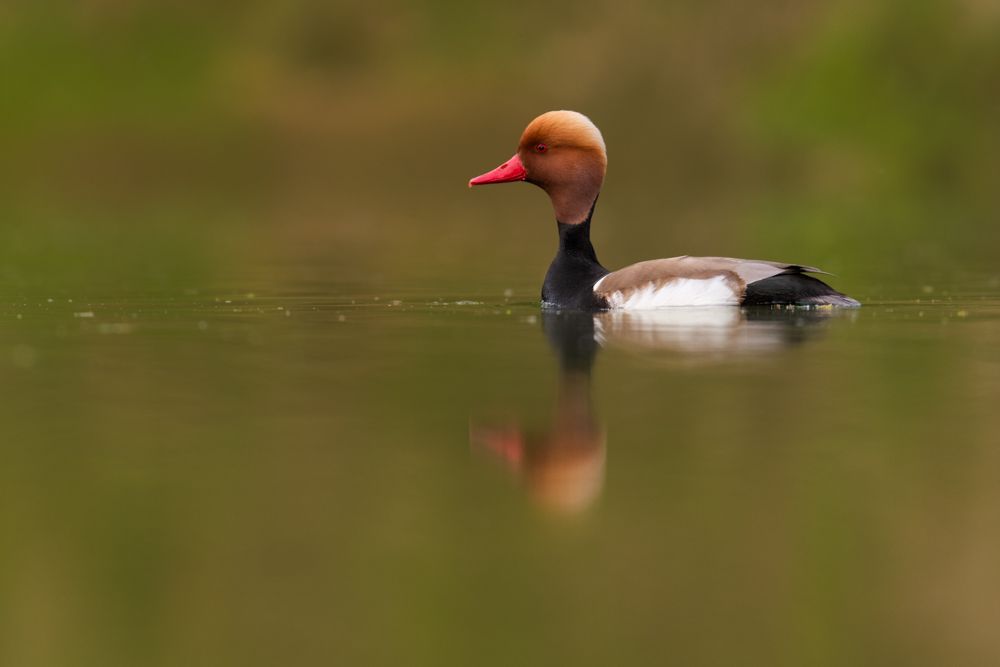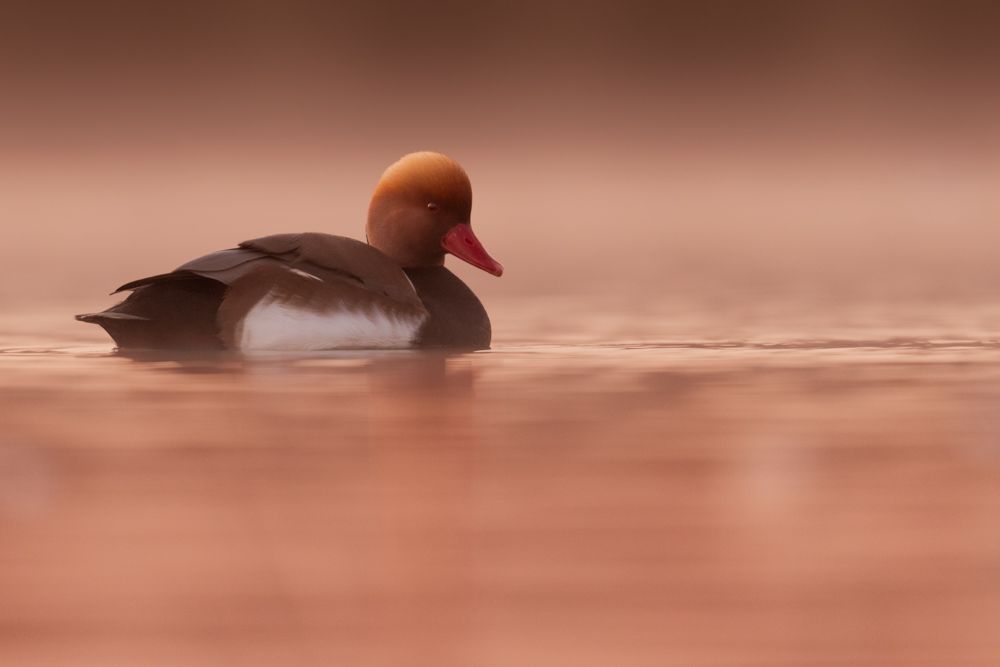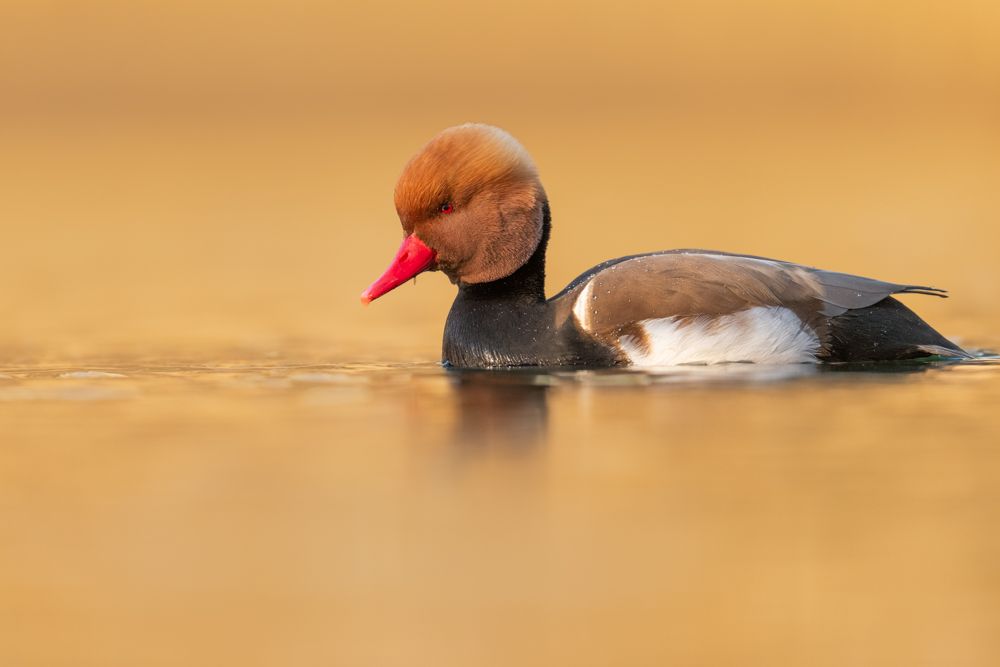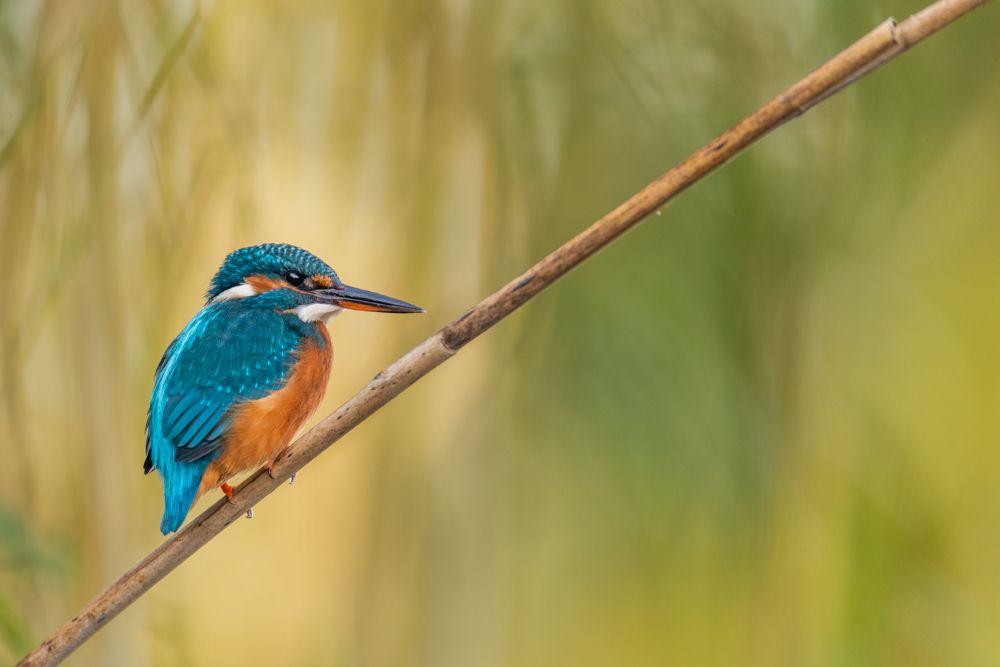Red-crested pochard (Netta rufina)
Profile
Scientific name: Netta rufina
Class: Birds
Order: Anseriformes
Family: Anatidae
Length: 53-57cm
Wingspan: 84-88cm
Weight: 800-1200g
Distribution: Europe, East Asia
Breeding population CH: 210-300 pairs
Habitat: Various lakes, slow-flowing waters
Migration behaviour: resident bird, short-distance migrant
Appearance & Identification
The red-crested pochard male is easily stands out due to its intense colouring. Eyes and beak are bright red. The head is bright orange depending on the light conditions. The chest is completely black and shows a clear separation to the orange feathers on the head. The sides are white like the Tufted duck. The tail is black again and the back and shoulders are brown. Also special is the white wedge at the base of the wings.
In summer the males moult into a more inconspicuous coloured eclipse plumage. This is similar to the plumage of the female. The two can be distinguished by the colour of the beak and eyes. The male has a red beak and red eyes all year round. The female has dark eyes and a grey beak. The tip of the beak can be slightly orange to pink, depending on the individual.
The plumage of the female is also renewed in regular intervals as well, but the plumage looks the same all year round. It is mostly unpatterned and light brown to beige. The upper side of the head is slightly darker than the underside.
Risk of confusion
The red-crested pochard is practically unmistakable. Both male and female show unique characteristics that make them easy to identify. Even at long distances, the orange head of the male can still be easily seen.
Habitat
The red-crested pochard lives on various lakes and slow-flowing waters, in the southern distribution area it also inhabits lagoons. It prefers shallow and warm waters with lush shore and underwater vegetation.
During the winter months, the red-crested pochard has fewer demands on its habitat and can often be observed in the harbour area. There it is protected from wind and waves and still finds enough food.
Distribution in Switzerland
100 years ago, the red-crested pochard was still a very rare duck in Switzerland. It was probably already a winter guest in Switzerland a good 200 years ago. However, reliable evidence has only been available since the beginning of the 20th century. The first broods were recorded on Lake Constance about 80 years ago. Gradually, the red-crested pochard spread to other waters as well. Especially in the last 30 years the red-crested pochard has increased considerably. The diving duck probably benefits from climate change. In recent decades, it has extended its breeding grounds to the northeast. Another reason for the increase in the red-crested pochard in Switzerland is the improvement in water quality. The effect of the improved water quality is explained in the following chapter.
In Switzerland, the red-crested pochard is now a fairly common breeding bird. The breeding population is estimated at 210 to 300 breeding pairs. If the trend continues, this number will increase even further.
In winter, a large part of the European population lives in Switzerland. The winter population is estimated at about 40'000 individuals and this number is increasing from year to year.
Diet
The red-crested pochard feeds mainly on water plants. A large part of the food consists of the stonewort algae. This plant benefits from the improved water quality and the large food supply provides good wintering conditions for the red-crested pochard.
The red-crested pochard gets its food by diving. It dives up to 4 m deep. On average a dive doesn’t take longer than 10 seconds. At low water depths, the red-crested pochard can dabble. But I have never been able to observe this behaviour myself.
Breeding behaviour
As with all ducks, the female alone takes care of the young. The nest is well hidden in the shore vegetation. The red-crested pochard also likes to nest on small islands. The female lays between 8 and 11 eggs in the nest. These are incubated for the following 26 to 28 days. Only a few hours after hatching, the young leave the nest. Under the leadership of the female, the young have to find and take in the food themselves. After 45 to 50 days, the young then attain the ability to fly.
Red-crested pochards often lay eggs in the nests of other duck species. I have already observed a family of pochards with a young red-crested pochard.
Migration behaviour
The Swiss breeding population remains in Switzerland throughout the year. In the winter months, many red-crested pochards move to Switzerland from the southwest. The migration begins already in summer. Males in particular leave the breeding areas early and then moult in large groups at so-called moulting places. Some of these moulting places are in Switzerland, one of the largest moulting places for the red-crested pochard is on Lake Constance. In spring, the winter guests move back to their breeding areas.
Photographing the red-crested pochard
Particularly in winter, red-crested pochards can be observed in all major harbours in Switzerland. Harbours are not so optimal for taking pictures at eye level, but if this is possible, photography is not so difficult. Many birds get used to the presence of humans during the winter and lose their shyness. In an earlier blog article, I wrote how I took this and other photos of the red-crested pochard.
Red-crested pochards are quite difficult to expose in strong sunlight. While the dark plumage parts swallow a lot of light, the light plumage parts are quickly overexposed. The result are completely black and white areas without any image information. This cannot be corrected even with an image processing program. The histogram can help you to find the right exposure for the duck. In good light, i.e. when the sun is low in the sky or it is cloudy, it should be possible that both the light and dark areas contain image information.
Other species
Resources
The population figures, length, weight and wingspan correspond to the data of the Vogelwarte Sempach
Information on behaviour, distribution etc. is based on my own observations and was supplemented with information from the following sources:
The Birds of Switzerland (2007) Lionel Maumary et al.
Swiss Breeding Bird Atlas 2013-2016
The Cosmos Bird Guide (2017) Lars Svensson et al.


